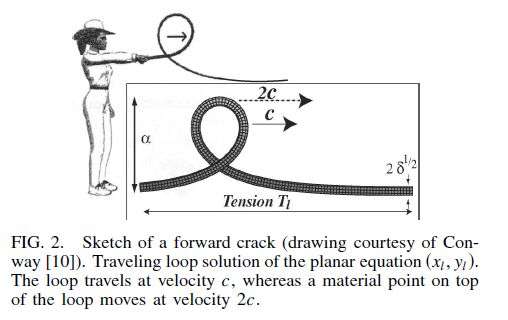Will wrote: ↑Mon Jun 17, 2019 4:45 pmI wasn’t talking about rod rotation at all.
You said in post 20 “ It can't transfer its energy as efficiently into A so the line in the rod leg (labelled "Running line" above) gets tighter and
rotation is slowed a little.” (My bold).
Ah, got ya. Sorry, I picked the wrong option ...

From what I can see in the videos with the marked lines, the only part of the line path that is curved* is the top leading edge of the loop. That little section is the only place in the line's path where the rotation occurs.
We can modify the amount of line following a curved path by adjusting the tension in the rod leg with our rod tip.
Presumably if the line speed in the loop slows below the speed of the fly leg, you get a disturbance in the loop shape (dolphin nose?)?
Presumably, yes. I need to study that some more though. (More video analysis. Yippeee!

)
I guess I’m struggling with how the front taper can both speed up the final portion of turnover and dissipate the energy to get a soft turnover at the same time... surely if energy is being dissipated, then the line should slow?
The "at the same time" bit is where the issue is. It doesn't happen at the same time in one cast. If we pull back on the rod leg, we can momentarily increase the speed of the taper and leader going away from us. If we push forward on the rod tip (reducing tension in the rod leg) we can let the energy wipe off the taper.
However, this only works properly if the cast was not overpowered in the first place. An overpowered cast will still kick a bit, but not as much as if there were no taper on the front.
I think Lee's videos are wonderful examples of how the taper is performing. Frame-by-frame advancing lets us see a perfect comparison of two taper designs in action.
Cheers,
Graeme
* In a "normal cast" where the rod leg is not moving forward or back


